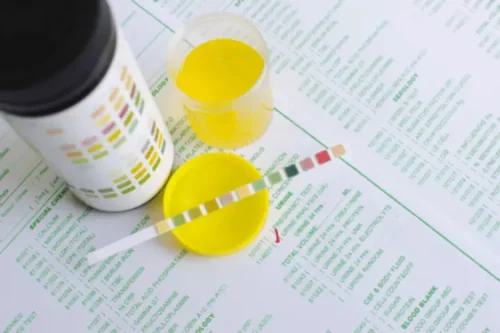
In Denmark, mortality rate ratios in people with AUD increased from 1987 to 2006 from all diseases and medical conditions; mortality rate ratio from suicide was increased only in women during 2002 to 2006 (Table (Table3).3). In Sweden, mortality rate ratios from all causes of death increased in men but was unchanged in women during the entire study; mortality rate ratio from suicide increased in both men and women (Table (Table33). In a separate research study, it was found that those individuals who reported drinking excessive amounts had shorter life expectancies at age 40 of approximately 4 to 5 years. Approximately 20% of the alcohol-related survival difference was attributed to death from cardiovascular disease. Further exploration and analysis of the study results revealed that people who drank beer or spirits, as well as binge drinkers, had the highest risk for mortality from all causes.

Great Scott! One of the most beloved time travel movies of all time is now streaming on Netflix
Fatty liver disease can often be reversed by stopping drinking alcohol. After two to three weeks of abstaining from alcohol, fatty deposits disappear and liver biopsies appear normal. Alcoholic fatty liver disease appears early on as fat deposits accumulate in the liver. People who consume four to five standard drinks per day over decades can develop fatty liver disease. Patients admitted to the hospital are also much more likely to exhibit violent, reckless behaviour, with some chronic drinkers even exhibiting suicidal behaviour due to developing mental health disorders [5]. Although there is no cure for heart disease, making lifestyle changes and avoiding alcohol can increase life chances, and mortality rates can be improved [27].

Study populations
- Table 3 shows the comparison of mortality risks of males by drinking status by different causes of deaths, with non-drinkers as the reference.
- While it’s smart to cut back if your drinking veers into bingeing territory, there’s likely no reason to stop drinking if you do so in small amounts — just as you probably shouldn’t feel compelled to start sipping if you don’t already.
- According to previous literature, the rate of drinkers who quit alcohol is not high, we speculate that the impact on the results should be limited.
- When it comes to alcoholism, seeking help and making a change are crucial steps towards improving both the quality and length of life.
- “I don’t think alcohol is evil by any means but it’s a riskier proposition as you get older—you have to be more cautious,” says Moore.
By the time a person reaches end-stage alcoholism, drinking has taken over their lives and has likely had a negative impact on relationships, work or school, finances, and overall health. If a person tries to quit drinking on their own during end-stage how long do alcoholics live alcoholism, they may experience severe symptoms of withdrawal, including tremors and hallucinations. One of the most severe consequences of alcohol withdrawal is called delirium tremens (“the DTs”), which if left untreated, can be fatal.
Long-Term Effects of Alcoholism
Esther’s extensive knowledge in Crisis Intervention has helped her motivate many individuals suffering from substance abuse issues take the first steps towards healing. Beyond the meta analyses are several recent epidemiological studies finding even moderate and low alcohol consumption has negative consequences for health and longevity. Your body can’t produce thiamine on its own—it has to be ingested through your diet. This is typically a non-issue for most healthy adults (think whole grains, asparagus, kale, pork, beef, chicken, eggs and potatoes). Those who struggle with alcohol use disorder, though, are at risk of thiamine deficiency. Instead of eating a balanced diet, many alcoholics drink their calories, depriving their bodies of essential vitamins.
- Jack considers facilitating The Keepers of the Wisdom group a privilege and an awesome responsibility to assist the 55 year old population discover that aging can be joyful, peaceful, and comfortable; with balance in living and learning.
- Early intervention plays a significant role in improving the outcomes for individuals struggling with alcoholism.
- As time goes on, alcoholism progresses, affecting your health and well-being.
- Depending on the country, current guidelines (including those in the US) could allow levels of drinking high enough to shorten life expectancy.
- Eventually, their tissue cells may become dependent on alcohol to function normally.
- Chronic, long-term drinking can contribute to malnutrition by replacing foods needed for essential nutrients and by interfering with absorption, storage, or metabolism of the essential nutrients.
- However, alcoholic beverages are far from a magic pill and drinking is always a trade-off between the positives and negatives.

According to the CDC, more than one million people die yearly of cirrhosis, including over 40,000 people in the United States. The same amount of alcohol is likely to have a bigger impact in your 60s or 70s than it did in your 20s. I’m the co-founder of Longevity Advice and have been passionate about radical life extension ever since I was a teenager.
- During the early stages of the disease, the person may drink heavily and may experience hangovers in between drinking episodes.
- She is a Licensed Advanced Drug and Alcohol Counselor, LAADC, and has a Master’s Degree in Counseling/ Psychology.
- This is typically a non-issue for most healthy adults (think whole grains, asparagus, kale, pork, beef, chicken, eggs and potatoes).
- This is a comparatively non-threatening level of drinking, which may not always lead to alcohol abuse.
- Alcohol abuse increases the risk of life-threatening diseases, such as fatty liver, cirrhosis, and coronary heart disease [5], which, in turn, reduce expected lifespan.
- Someone with decompensated cirrhosis may develop ascites (or fluid in the abdomen), gastrointestinal bleeding, and hepatic encephalopathy, in which the brain is affected.
Animal studies showing life extension from moderate amounts of alcohol. Since animal studies can be done in controlled environments there are many fewer variables that could confound the results compared to epidemiological studies on human populations. The good news—if caught early enough—is that wet brain syndrome is a preventable, treatable disease if you stop drinking and seek https://ecosoberhouse.com/recovery-residence/ help. Intense thiamine replacement therapy and abstinence from alcohol can result in a noticeable improvement in both mental and physical functioning within weeks. You might hear the dated term “wet brain” used in reference to Wernicke-Korsakoff syndrome. However, the term “wet brain” carries and perpetuates stigma by inaccurately conveying that people willfully contract it.
How health care leaders can prioritize health equity for the LGBTQIA2+ community

